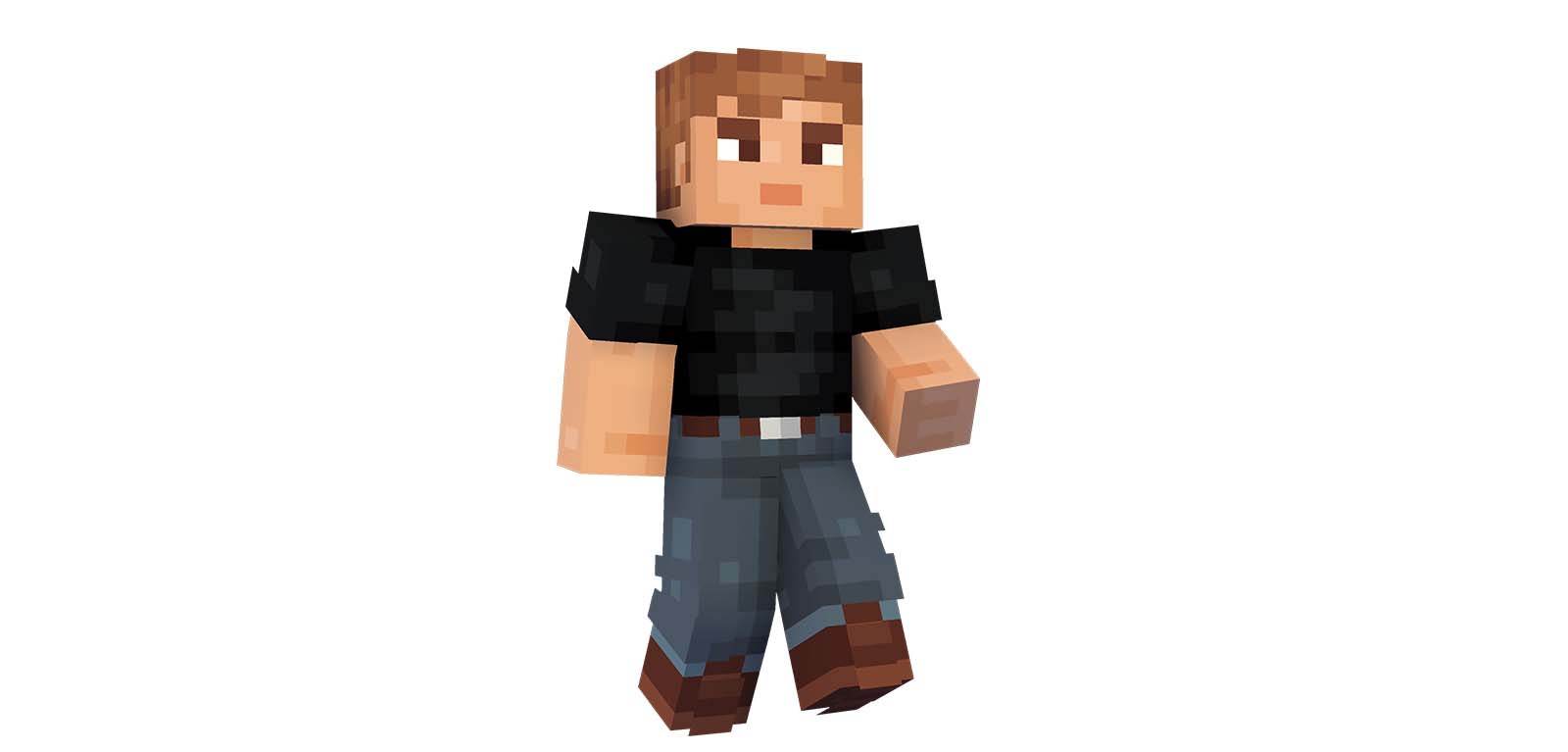Queen’s Professor features in new Minecraft World downloaded over one million times in first months
The unique educational resource which allows gamers to travel through the solar system and throughout history was created as part of Our Place in Space.

A new Minecraft world based on the work of artist Oliver Jeffers and astronomer Professor Stephen Smartt, who is partly based at Queen’s University Belfast, has been downloaded over one million times since it was launched in April.
The cosmic adventure has been created as part of Our Place in Space, a recreation of our solar system as a 10 km sculpture trail with an accompanying AR app. The installation has spent a year touring the UK and engaged over 1.5 million people through visits, spectacular events and a programme of digital workshops for children and young people.
The sculpture trail has now found a home at the Ulster Transport Museum in Northern Ireland and the legacy of the project continues through its suite of innovative educational materials and resources.
Recently released on the Minecraft Marketplace as a free download, gamers can immerse themselves in the Our Place in Space world, an educational gaming experience that sees you journey through the solar system, stopping off at each of the planets, taking part in challenges and exploring historical events back on Earth.
As well as learning about the solar system, users will also uncover and learn about issues such as war, famine, slavery and even fake news. Downloaded over 500,000 times in its first weeks, the world is already proving a massive hit with gamers across the globe.
The news comes as the Our Place in Space sculpture trail also prepares to touch down in Hanoi in Viet Nam later this autumn. Installed in parks and around lakes in the northern city, the project will see the Nerve Centre partner with Vietnamese social enterprise Think Playgrounds as part of the British Council’s UK/ Viet Nam Season. This will celebrate and showcase the best of educational and cultural exchange and collaboration between the UK and Viet Nam.
Elsewhere, resources authored by Professor Stephen Smartt and with designs by Oliver Jeffers are available as free classroom learning resources for use at Key Stage 2 and 4 and cover topics from Planet Earth and the Solar System to Space Physics and Life in the Universe.
The Our Place in Space augmented reality app which was created as part of the project, and is still available on Apple and Android, enables users to explore the solar system wherever they are in the world, experiencing the planets in augmented reality and considering 10,000 years of human history on Earth. App users can also track their steps through the solar system and collect space souvenirs, including characters from the world of Oliver Jeffers.
For more information and to access Our Place in Space educational content, visit www.ourplaceinspace.earth.
Produced by Nerve Centre, Our Place in Space invites participants to consider how we might better share and protect our planet in future and what is the difference between ‘us’ and ‘them’? The project aims to bring our solar system down to Earth and send us soaring into the stars to find new perspectives and reconsider what it means to live life on our planet.
Professor Stephen Smartt, Astronomer at Queen’s University, Belfast and Professor of Astrophysics at Oxford University, said: “While I’ve been a Professor and an astronomer for many years, this is the first time I’ve ever featured as a character on Minecraft! It has been a fantastic experience working as part of the Our Place in Space project over the course of the last two years.
“It can be difficult to visualise and appreciate the scale of the Universe. Our own solar system is only a tiny part of our Galaxy, yet its dimensions are colossal.
“As always, we wanted to make this a fun and interactive experience and develop scientific understanding and creative thinking. Communicating the enormity of space and our place within it is very important and thinking imaginatively, informed by science, is how humanity will solve big problems.”
Oliver Jeffers, internationally renowned artist and author said: “For centuries, we’ve defined ourselves by who we are and who we’re not. Which side we choose, on what ground we stand, who and what we fight for. A human story, that lives merely in human minds. But with distance comes perspective – and what happens to our perspective on everything when we look back at Earth from space? Our Place in Space is a playful experiment that asks: What is the difference between ‘us’ and ‘them’? Which side are we on, and if we look back at ourselves from the vastness of outer space – alone on our tiny planet, the only one that can harbour life – should there be any ‘sides’ at all?”
Our Place in Space was commissioned by Belfast City Council. Led by Nerve Centre, the project is a collaboration between Astrophysics Research Centre at Queen’s University Belfast, National Museums NI, NI Science Festival, Big Motive, Taunt, Microsoft, Jeffers & Sons, Dumbworld, Live Music Now and Little Inventors.
Our Place in Space was originally conceived through a research and development project and presented as part of UNBOXED: Creativity in the UK, co-commissioned by Belfast City Council. UNBOXED was designed to celebrate creativity and innovation, with funding from the Northern Ireland Executive, UK Government, Scottish Government and Welsh Government.
Media
For media inquiries, please contact emma.gallagher@qub.ac.uk